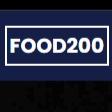Food200
Feeding Hope: Transforming Surplus into Nourishment, hundreds at a time.
Created on 17th March 2024
•
Food200
Feeding Hope: Transforming Surplus into Nourishment, hundreds at a time.
The problem Food200 solves
Food Waste Reduction: By facilitating the redistribution of surplus food from businesses to organizations in need, the project helps minimize food waste. Businesses often discard food nearing expiration, contributing to the global food waste problem. This platform provides a mechanism to redirect such surplus food to those who can use it, thus reducing waste.
Food Insecurity Alleviation: By efficiently routing surplus food to food banks, shelters, and community organizations, the project helps alleviate food insecurity within local communities. Many people rely on these organizations for their daily meals, and by providing them with a consistent supply of surplus food, the platform contributes to addressing food insecurity.
Efficient Resource Utilization: Through real-time inventory tracking and intelligent matching algorithms, the project optimizes the use of surplus food resources. Businesses can better manage their inventory, and surplus food is matched with organizations based on their needs and capacity, ensuring efficient utilization of available resources.
Community Engagement and Collaboration: The platform fosters community involvement by allowing individuals to contribute through volunteering, donating, or sharing surplus food from personal sources. Additionally, collaboration with local businesses and government agencies provides additional incentives for surplus food donations, enhancing community engagement and support.
Environmental Impact Reduction: By reducing food waste, the project contributes to reducing the environmental impact associated with food production and disposal. Food waste generates greenhouse gas emissions and consumes resources such as water and energy. By redirecting surplus food to those in need, the project helps mitigate these environmental impacts.
Challenges we ran into
Integrating maps and routing
Technologies used
